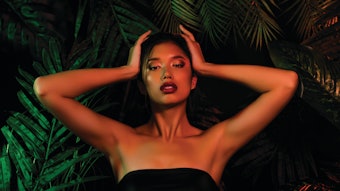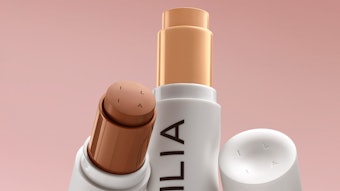While the use of prestige versus mass market cosmetics has been at the center of many media disputes, Mintel’s latest research reveals mass market color cosmetic sales are set to hit £1 billion in 2014, with prestige sales additionally predicted to reach £552 million.
With 93% of U.K. women using color cosmetics, total sales grew to £1.5 billion in 2013, an impressive 6% increase on 2012 sales that reached £1.4 billion. Notably, it is prestige sales that have seen the biggest growth, holding a 35% share of the market in 2013 (£531 million), up from 34% in 2012 (£491 million). Mass market’s share on the other hand has fallen from 66% in 2012 (£939 million) to 65% in 2013 (£986 million).
Charlotte Libby, senior beauty analyst at Mintel, said, “The prestige color cosmetic market performed strongly in 2013 as consumers traded up to prestige brands and took advantage of continued innovation in the category. However, as savvy shopping behaviors continue in the beauty market—and innovation is matched by mass-market brands—the prestige share of the market is unlikely to see continued increases by the end of 2014. Prestige brands can encourage consumers to trade up with smaller-size products, offering a more purse-friendly method of trialing products. Mass brands can also focus marketing communications on their product formulations, dissuading consumers that more expensive products are the only choice for advanced formulations.”
Within the prestige sector, showing their high-fashion credentials, it is eyebrow definers that top the color cosmetic choice with one in five (22%) users choosing a prestige branded product over a mass-market or budget brand. Indeed, following on from the arches celebrated in the Game of Thrones TV series as well as the Cara effect, sales have been brow-raising. Sales of eyebrow products reached £28 million in 2013, an impressive 42% increase on 2012 sale, which were valued at £20 million. With a quarter (25%) of U.K. women now using eyebrow definer, this growth looks set to continue with sales predicted to reach £31 million in 2014, gaining a 7% proportion of the eye color cosmetics market.
Further to this, Mintel’s analysis shows brand loyalty among prestige color cosmetic users is strong, with two in five (39%) of those who buy prestige brands of foundation agreeing they rarely change the brand of face makeup they use, compared to an average of just 27%. Additionally, when choosing their color cosmetics, U.K. women show a greater willingness to favor prestige base products over prestige point color, with 42% of primer users choosing a prestige product over a mass market or budget brand compared to just 11% of nail polish users.
Despite its low penetration in the prestige sector, as the creativity of nail polish has become increasingly fashionable and accessible—the nail color cosmetic segment continues to grow from strength to strength. Sales of nail polish surpassed lip color for the first time in 2013 with the former reaching sales of £244 million and the latter £242 million. While this marked a 6.6% increase for nail polish sales, they are predicted to reach £284 million by 2014, with the lip sector expected to grow to just £244 million in 2014.
Following strong product innovation and fashion credibility, seven in ten (69%) British women now use nail polish, compared to just six in 10 (59%) women in 2013. Today, usage peaks at 16–24-year-olds with four in five (81%) of this age group using nail color. Rather than having a firm favorite, almost half (48%) of nail polish users wear four or more shades, with purple being worn by half (48%) of nail polish users, closely followed by baby pink (45%) and dark red (42%).
In the rest of the color cosmetic segment however, the palette is becoming muted with a third (33%) of U.K. women who use eye, lip or nail color cosmetics saying they only use natural-look products, with this attitude having no age bias (32% of 16–24-year-olds and 33% of 55–64-year-olds).
Showing the developing awareness of consumers for natural beauty, nearly half (44%) of face cosmetics users agree that ads with photoshopped models do not represent a look that can be achieved at home—rising to over half (56%) of those aged 16–24. Moreover, showing a sign of the times, almost a quarter (24%) of face cosmetics users look for products that are camera-ready or skin-perfecting.
“In 2013, fashion began to move toward a more natural look with ‘no-makeup makeup’ becoming a popular trend. This has continued into 2014 with the #NoMakeupSelfie nominations on Facebook and products to enhance natural skin instead of covering it. Furthermore, as our research shows, the level of awareness of Photoshop in face color cosmetics advertising is high, this indicates the positive effect of real beauty campaigns from brands such as Dove, and retailers taking a stand against digitally altered images,” Charlotte concludes.
Mintel’s Colour Cosmetics – UK – 2014 report is available to purchase from Mintel.










